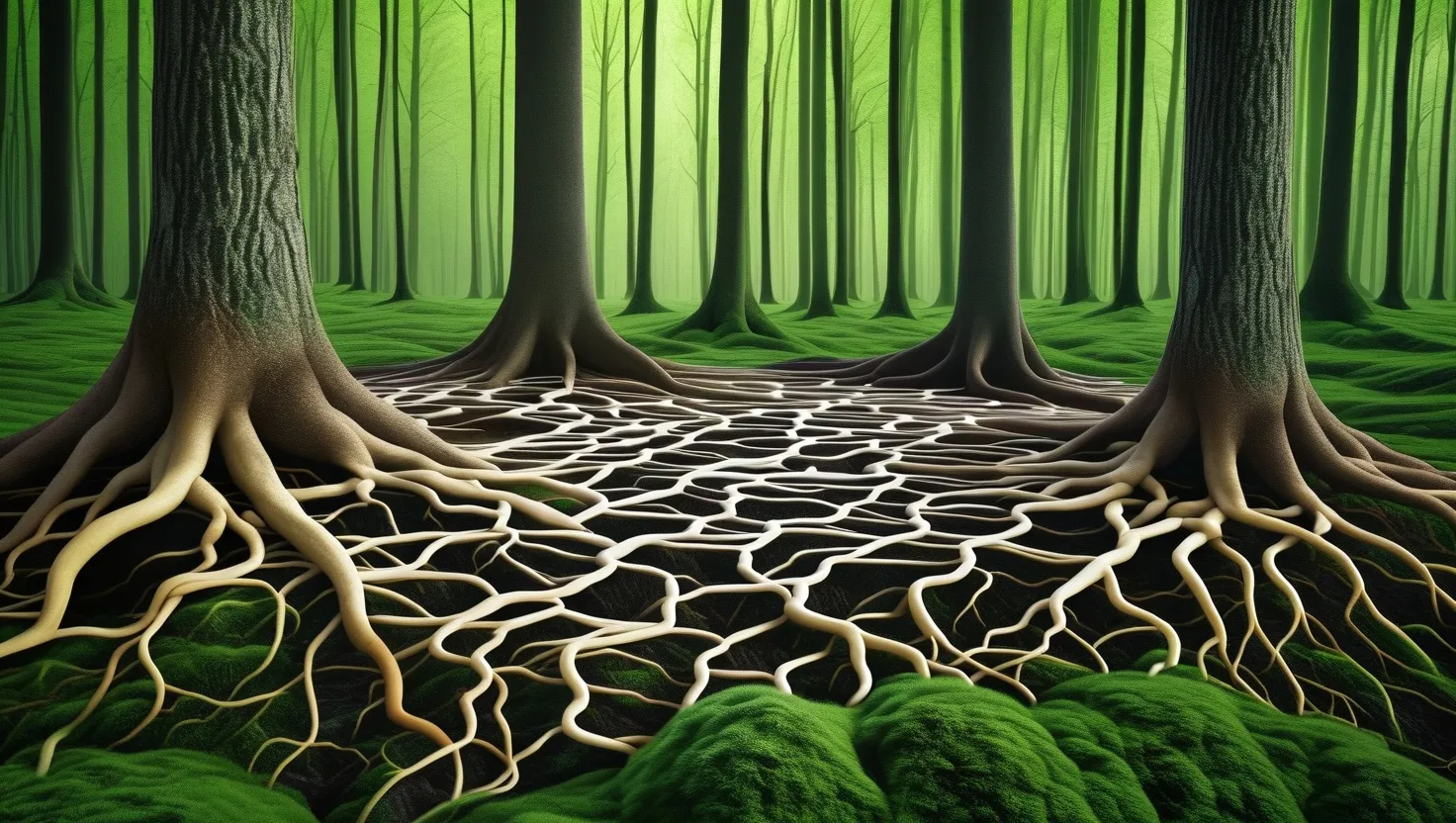Imagine walking through a dense forest, the trees towering above you, their leaves rustling in the breeze. What you might not realize is that beneath your feet, a complex and fascinating network is at work, connecting these trees and other plants in a way that is both astonishing and crucial for their survival. This is the world of mycorrhizal networks, often referred to as the “wood wide web.”
At the heart of this network are fungi, specifically mycorrhizal fungi, which form symbiotic relationships with the roots of plants. These fungi extend their hyphae, thin branching filaments, into the soil and around the roots of trees, creating an intricate web of connections. This network allows trees to share resources such as water, nutrients, and even carbon, in a way that is mutually beneficial.
One of the most remarkable aspects of mycorrhizal networks is their ability to facilitate communication between trees. When a tree is under attack by pests or diseases, it can send out chemical signals through the fungal network, warning its neighbors of the potential threat. This early warning system allows other trees to prepare their defenses, producing chemicals that can deter the pests or attract predators that feed on them. For instance, if a tree is infested by budworms, it can alert nearby trees through the mycorrhizal network, prompting them to increase their production of defensive enzymes.
These networks are not just about defense; they also play a critical role in supporting the health and growth of trees. Older, more established trees, often called “hub trees” or “mother trees,” act as central nodes in the network. Their deeper roots give them access to more resources, which they can share with younger or struggling trees. This sharing is particularly beneficial for saplings in the understory, which often have limited access to sunlight and thus struggle to produce enough food through photosynthesis. The mycorrhizal network provides them with the necessary nutrients to grow and thrive.
The impact of mycorrhizal networks on forest ecology is profound. They help maintain soil health by preventing nutrients from being leached away, and they support a higher diversity of plant species. In old forests, individual fungi can cover vast areas, sometimes extending over 100 square meters, and can connect thousands of plants. This interconnectedness enhances the overall resilience of the forest ecosystem, allowing it to better withstand environmental stresses such as droughts and insect infestations.
The benefits of mycorrhizal networks extend beyond the forest itself. They have significant implications for sustainable agriculture and reforestation efforts. By understanding how these networks function, farmers and foresters can develop more effective strategies for planting and maintaining healthy crops and forests. For example, inoculating soil with mycorrhizal fungi at the time of planting can help trees establish themselves more quickly and robustly, especially in challenging environments like former mining sites.
Moreover, mycorrhizal networks challenge our traditional views of plant intelligence and ecosystem interconnectedness. They suggest that plants are not isolated individuals but rather part of a complex community that communicates and cooperates. This perspective has led to a reevaluation of how we manage forests and agricultural lands, emphasizing the importance of preserving and enhancing these underground networks.
The diversity of mycorrhizal relationships is also noteworthy. While trees are the most visible participants, many other plants, including orchids and heather, rely on these fungal connections for their survival. Orchids, for instance, have tiny seeds that contain no food reserves, so they must be infected by a fungus to obtain the necessary nutrients to germinate and grow.
In addition to their ecological role, mycorrhizal networks have a significant impact on climate resilience. By facilitating the sharing of resources, these networks help trees adapt to changing environmental conditions. For example, during periods of drought, trees connected through mycorrhizal networks can share water, reducing the stress on individual trees and helping the forest as a whole to survive.
However, these networks are under threat from human activities such as deforestation and the use of chemical pesticides. These practices can severely damage the mycelium, disrupting the delicate balance of the forest ecosystem and reducing the ability of trees to absorb carbon. Protecting these networks is crucial not only for the health of forests but also for their role in mitigating climate change.
As we continue to explore and understand the complexities of mycorrhizal networks, we are reminded of the interconnectedness of all living organisms. These networks serve as a powerful example of how cooperation and mutual support can lead to greater resilience and health in ecosystems. By learning from these natural systems, we can develop more sustainable practices that benefit both the environment and human societies.
In the end, the “wood wide web” is more than just a fascinating scientific discovery; it is a reminder of the beauty and complexity of nature. It challenges us to rethink our relationship with the natural world and to recognize the intricate web of life that underpins our planet. As we move forward, it is essential that we protect and preserve these networks, not just for the trees and plants they connect, but for the health of our planet as a whole.






